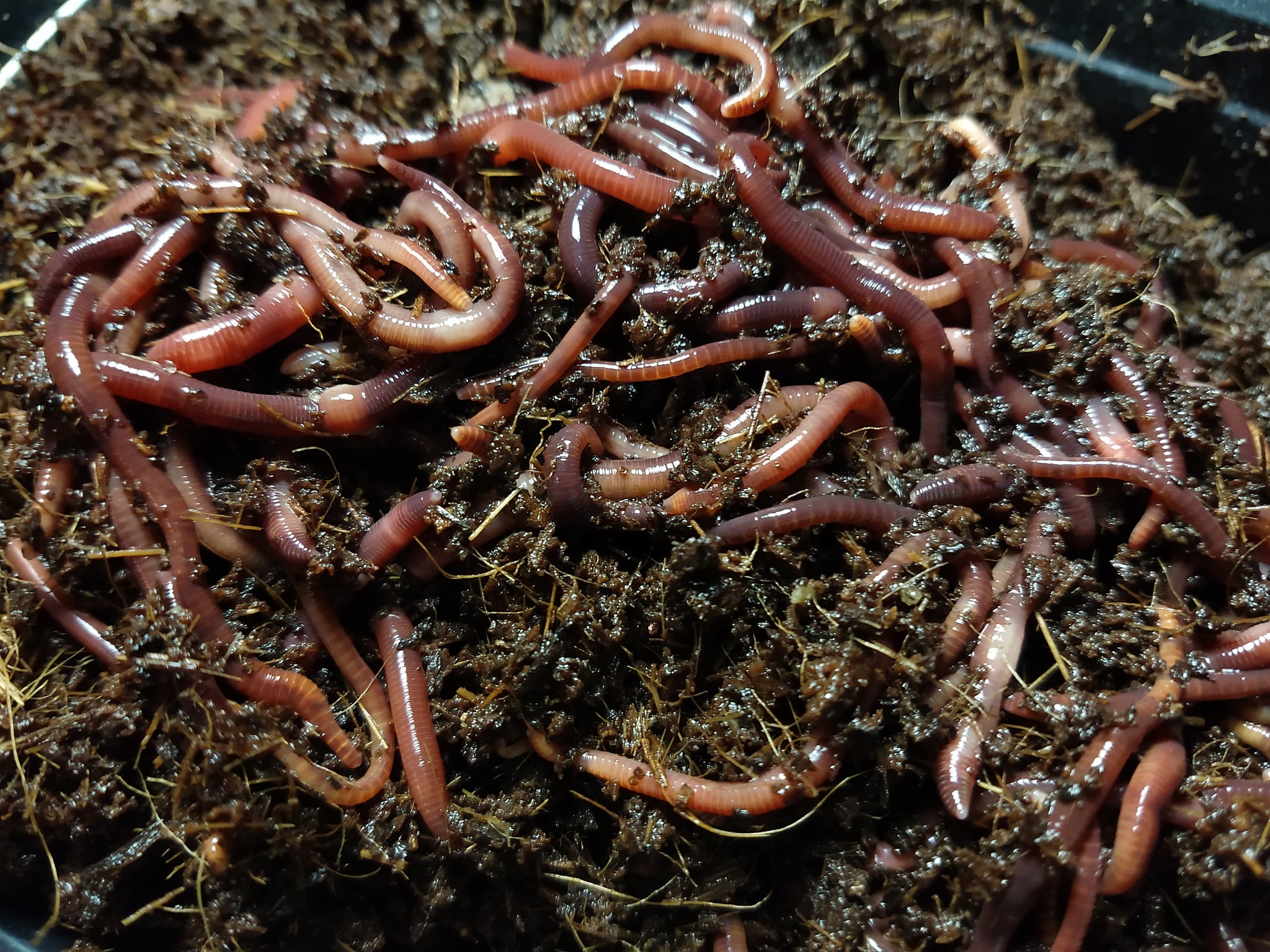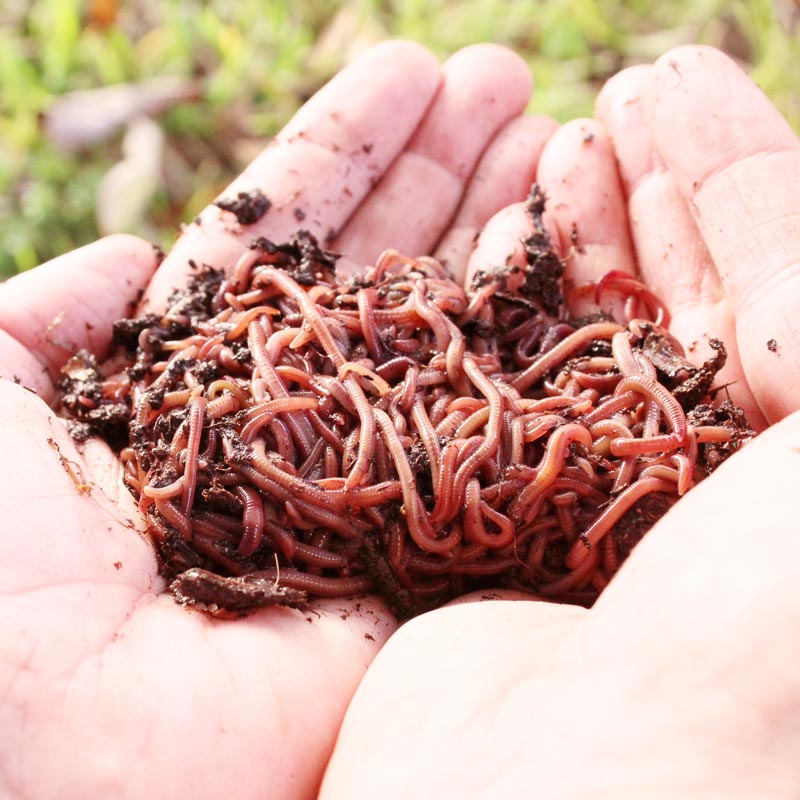Red Wigglers: The Unsung Heroes of Organic Waste Recycling
Red wigglers, or Eisenia fetida, serve as vital agents in the organic waste reusing procedure, transforming disposed of materials into important vermicompost. As the world progressively looks for remedies to fight waste buildup and improve farming productivity, comprehending the duty of these worms becomes necessary.
What Are Red Wigglers?
The exceptional resilience of red wigglers, clinically referred to as Eisenia fetida, emphasizes their critical duty in natural waste recycling. These little, reddish-brown earthworms are normally located in decaying natural matter, such as compost heap and manure heaps. Lake Hickory Bait. Unlike other earthworm types, red wigglers prosper in nutrient-rich settings and are very efficient at breaking down organic products, making them important for vermicomposting

(Red Wiggler Express)Along with their function in waste reduction, red wigglers add to soil health and wellness by boosting dirt structure and aeration via their tunneling tasks (Lake Hickory Bait). Their visibility in composting systems not only boosts disintegration prices yet likewise advertises a lasting strategy to squander administration, illustrating their importance in ecological preservation efforts
Advantages of Composting With Worms
Composting with worms, specifically red wigglers, uses countless benefits that improve both waste administration and soil wellness. These worms efficiently break down natural waste, transforming it right into nutrient-rich vermicompost that improves dirt. This procedure increases decomposition, enabling a quicker recycling of cooking area scraps and various other organic materials compared to typical composting approaches.
Furthermore, the vermicompost generated by red wigglers is including beneficial bacteria, which help boost dirt structure, aeration, and moisture retention. This improves the total wellness of plants, advertising vigorous growth and increased yields in yards and farming settings. The use of worms in composting reduces the manufacturing of greenhouse gases, such as methane, adding to an extra lasting waste administration system.

How to Beginning Vermicomposting
Developing a vermicomposting system is a simple process that can generate significant advantages for both waste monitoring and soil enrichment. To begin, select a suitable container, such as a plastic container or wood box, with adequate air flow holes to make certain appropriate air movement. The measurements need to ideally be about 2 feet by 3 feet, enabling ample area for the worms to flourish.
Next, prepare bed linen material, which can contain shredded newspaper, cardboard, or coconut coir. This bedding needs to be dampened to create an appropriate habitat for the worms. As soon as the bed linen remains in place, introduce red wigglers (Eisenia fetida) right into the bin, generally around one pound of worms for each square foot of surface.
Adhering to the placement of worms, include organic waste, such as fruit and vegetable scraps, coffee premises, and smashed eggshells. Prevent including dairy products, meat, or oils, as these can produce odors and attract pests. Place the container in a shaded, temperature-controlled area to keep optimal problems for worm activity. With these actions, you will properly launch a vermicomposting system that adds to sustainable waste management and improves your soil.
Keeping a Healthy Worm Bin
(Lake Hickory Bait)Maintaining a worm bin thriving needs normal attention and like ensure the wellness of the red wigglers and the performance of the composting procedure. Appropriate upkeep begins with keeping track of the dampness levels; the container ought to perspire but not soaked. An excellent general rule is to maintain an uniformity similar to a wrung-out sponge.
Aeration is critical. Delicately blending the bed linens and food scraps every couple of weeks protects against compaction and makes sure that all worms have accessibility to oxygen. In addition, it is necessary to feed the worms suitably. A well balanced diet regimen of vegetables and fruit scraps, coffee grounds, and smashed eggshells ought to be provided in small amounts to prevent overfeeding, which can bring about odors and bugs.
Temperature level law is an additional important aspect. Red wigglers thrive in a variety of 55 to 77 levels Fahrenheit. If the container ends up being too warm or cool, the worms might end up being stressed out - Lake Hickory Bait. Lastly, periodically look for indicators of wellness, such as worm populace growth and the visibility of healthy castings. By carefully handling these factors, one can keep a durable and productive worm bin.
Effect On Lasting Living
The effective maintenance of a worm bin not just benefits the wellness of red wigglers but additionally contributes substantially to sustainable living methods. By recycling natural waste, such as cooking area scraps and lawn particles, red wigglers aid divert significant amounts of material from land fills. This decrease in waste not only lowers greenhouse gas discharges but likewise minimizes see here now the environmental worry connected with waste management.
Additionally, the castings generated by red wigglers function as a nutrient-rich natural fertilizer, improving soil health and wellness and advertising plant development. This all-natural alternative to chemical plant foods supports sustainable farming and horticulture techniques, minimizing reliance on synthetic inputs that can damage communities. Additionally, worm composting cultivates understanding of waste management, urging individuals and neighborhoods to adopt more lasting practices.

Final Thought
In recap, red wigglers offer as crucial factors to natural waste recycling with their efficient decomposition of organic products. By integrating vermicomposting right into waste management techniques, people and neighborhoods can significantly minimize waste while advertising environmental sustainability.